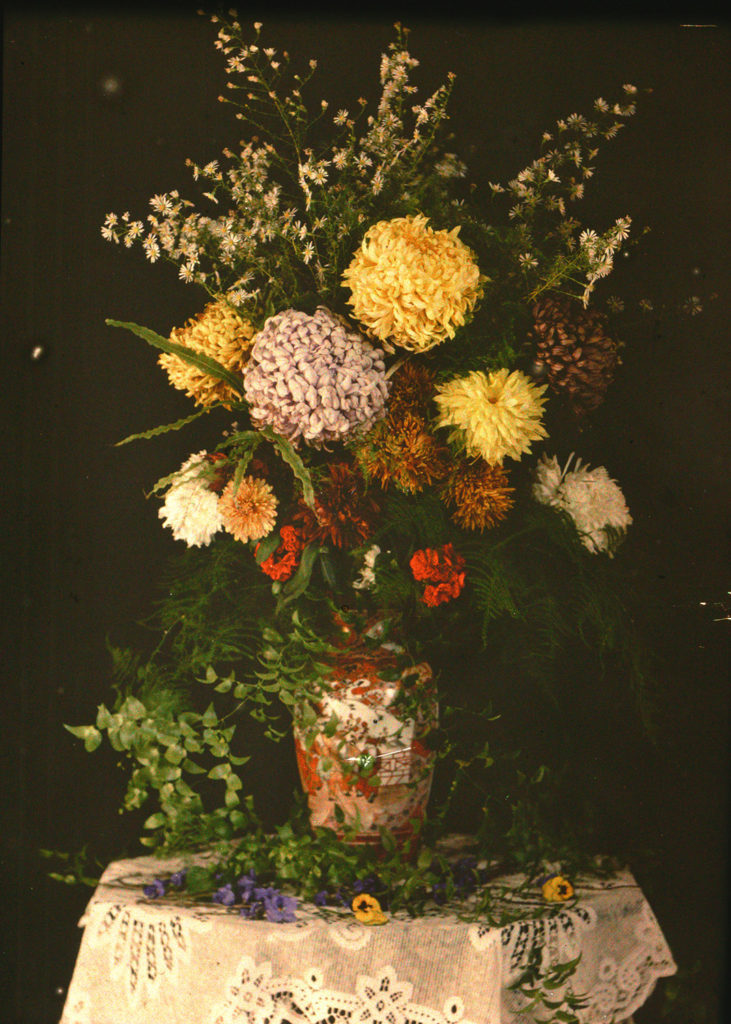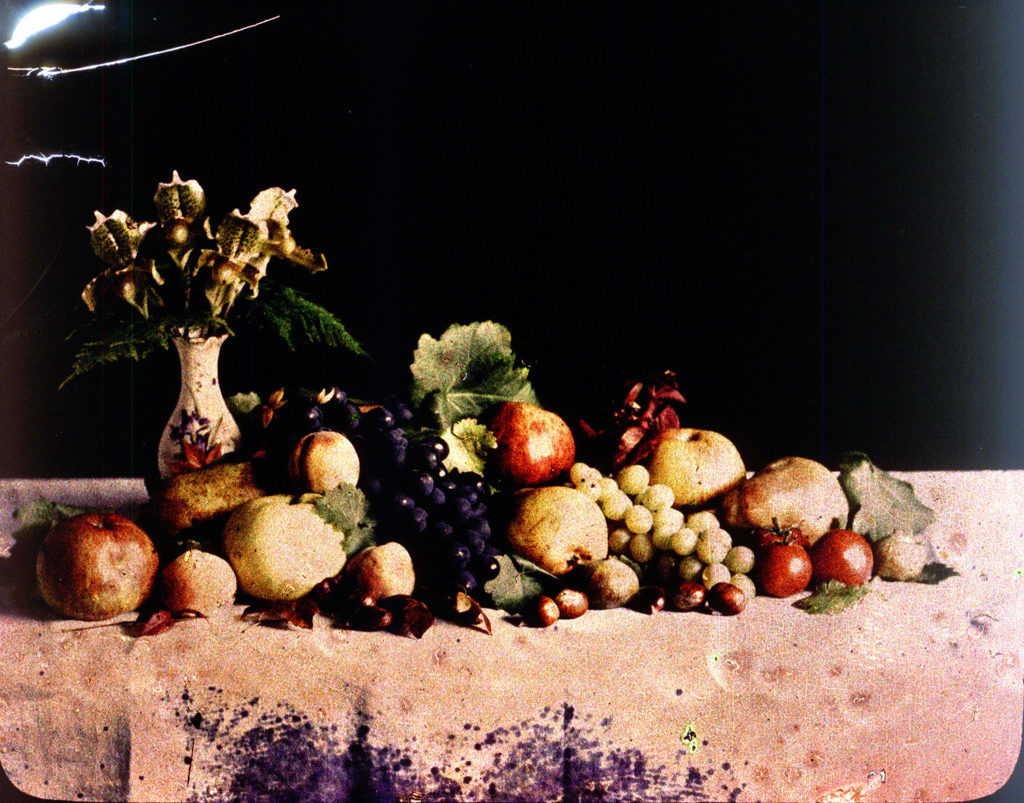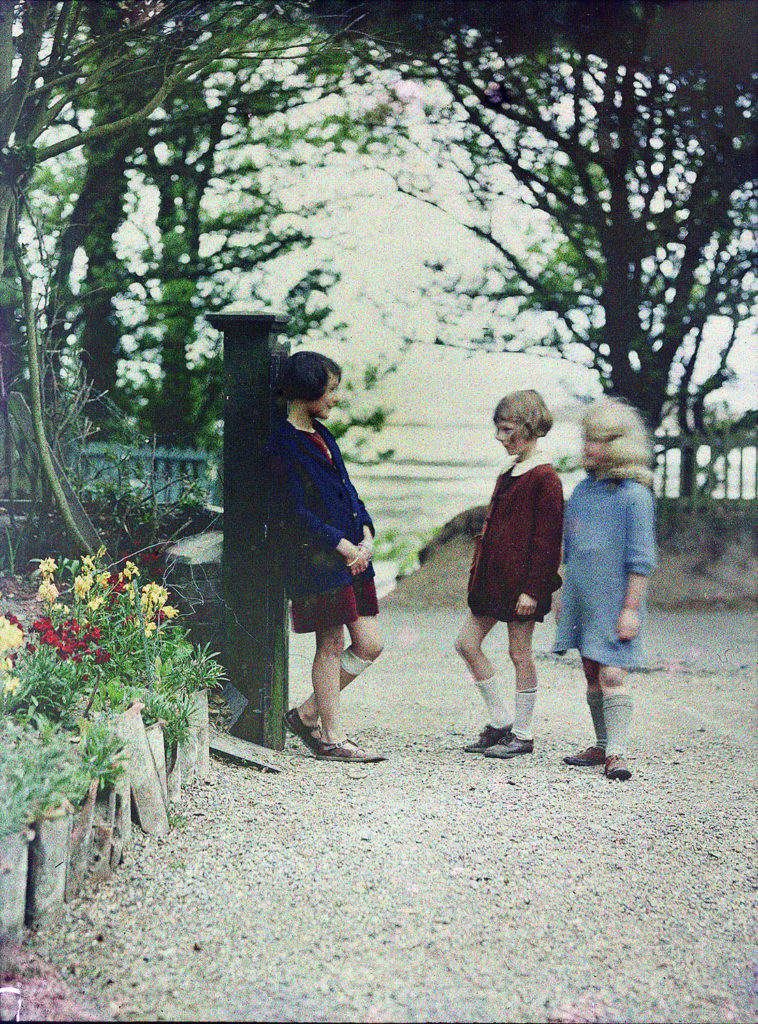Emile Guiton

Thomas Young (1842) theorised that physiological perception of light was trichromatic, that all perceived colour was produced optically, by the eye's sensitivity to just three wavelengths of light: red, green, and violet. Thomas Young's theories provided the theoretical foundations for the autochrome, which was the first commercially viable method of colour photography.
Autochrome was invented in France by brothers Auguste and Louis Lumière.Autochrome works by autochrome plates being covered in microscopic red, green and blue coloured potato starch grains (about four million per square inch). When the photograph is taken, light passes through these colour filters to the photographic emulsion. The plate is processed to produce a positive transparency. Light, passing through the coloured starch grains, combines to recreate a full colour image of the original subject.
The first autochrome photograph taken in Jersey was called Lumière Autochrome. The photograph contained a vase filled with garden flowers. This presumed to be to enable the camera to explore the variety of colours of the flowers.

Emile Guitons autochrome photos can be viewed as being part of the earlier colour collection. They also fall into two caterogies: still life (flowers, fruit, a colour chart etc) and domestic (country scenes, people, a gerden etc). The still lifes provide an insight into Guiton's experimentation into the autochrome process which would enable him to work and fix his quality and technical skills. The photograph of Mrs Guiton can be viewed as fitting into the pictorialist aesthetic.
Potato starch grains were used for the colour screen of autochrome. The grains were extremely fine, measuring to around 12-15 microns and were dyed green, blueviolet and orange-red. This was to give the plates a more naturalistic look.
All images featured are Emile Guiton's.
Information from:
https://hautlieucreative.co.uk/photo20al/wp-content/uploads/sites/33/2019/09/The-Autochromes-of-Emile-Guiton.pdf
https://blog.scienceandmediamuseum.org.uk/autochromes-the-dawn-of-colour-photography/


